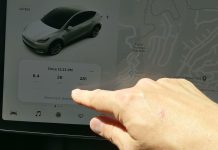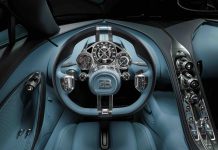Here’s the latest reader question, along with my reply!
Chris asks: I’m not getting spark and have been going through the diagnosis steps. The car in question is a 2000 Honda Civic. The coil is getting signal and power to it from the ignition control module indicating the ICM is functioning properly (also referred to as the igniter). I tested the primary and secondary resistance of the coil and all those values fall in range as well. But it won’t throw a spark from the coil tower. This doesn’t make sense to me. Is it possible for a coil to pass resistance tests (indicating it’s good) but not throw a spark from the tower (indicating it’s bad)? All the videos I’ve watched, nobody incorporates both methods. Either they test the coil by seeing if it’s throwing a spark from the tower or they test it for resistance. Thanks.
My reply: I’m assuming the engine cranks and that you have full battery voltage; if so and the resistance test checks out but the coil isn’t firing, your car’s OBD II system ought to register a code for a problem with the coil if the coil is the problem. I’d also check the crankshaft/camshaft position sensor, confirm voltage supply to the coil and so on. Having a spare known good coil on hand to just swap in and see is also helpful, of course.
I will ask my mechanic friend about this and see what he has to add!
. . .
Got a question about cars, Libertarian politics – or anything else? Click on the “ask Eric” link and send ’em in!
If you like what you’ve found here please consider supporting EPautos.
We depend on you to keep the wheels turning!
Our donate button is here.
If you prefer not to use PayPal, our mailing address is:
EPautos
721 Hummingbird Lane SE
Copper Hill, VA 24079
PS: Get an EPautos magnet or sticker or coaster in return for a $20 or more one-time donation or a $10 or more monthly recurring donation. (Please be sure to tell us you want a magnet or sticker or coaster – and also, provide an address, so we know where to mail the thing!)
If you’d like an ear tag – custom made! – just ask and it will be delivered.
My latest eBook is also available for your favorite price – free! Click here. If that fails, email me at EPeters952@yahoo.com and I will send you a copy directly!











Often, such a problem can be caused by a faulty crank position sensor or cam position sensor. I’m not familiar with Hondas….but many vehicles, such as Jeeps, with those symptoms, crank position sensor is almost always the cause. Had one once in which the sensor wasn’t even technically bad…it had just broken loose of it’s internal mounting, so it was riding on the surface of thing it got it’s signal from, so thus there was no code indicating anything was wrong. A loose wire or connector can cause those symptons too, while still allowing the coil to technically be hot- it’s not so much about there being spark or the juice to produce it (Although of course that is necessary) but more often on these modern vehicles it’s about the timing of the spark/pulsing. Be careful when testing too….as it’s easy to fry the computer.
On some cars, like some old Nissans, they didn’t technically have a separate crank position sensor; it was built into the distributor…..and when it would go bad, there was really no way to diagnose it….you just had to know about it- and to fix it, you had to replace the whole distributor! So I’m not sure how these Hondas are configured….but I’d investigate something along these lines….chances are, that is where the problem lies.
Sometimes turning the distributor 180 – 360 degrees, gets it to run, and shows the fault that is piston position is correct while valve timing was incorrect, firing at TDC>/intake instead of compression/power.